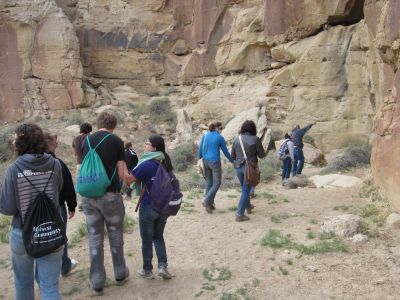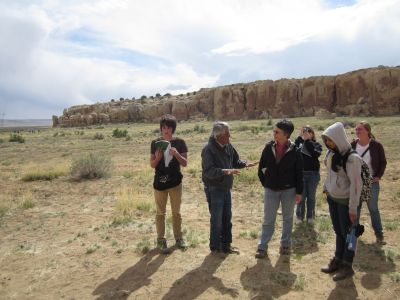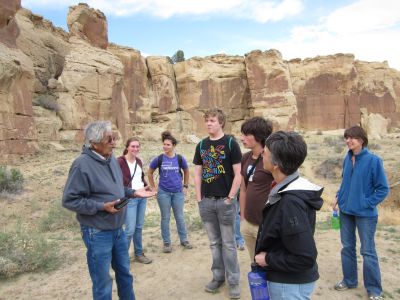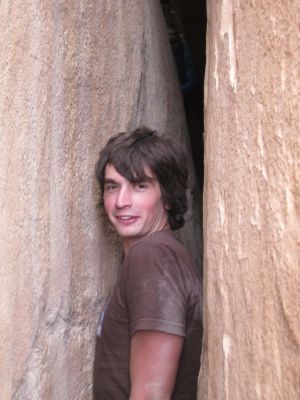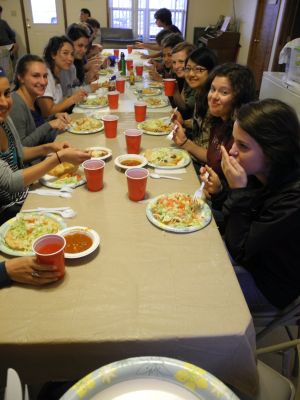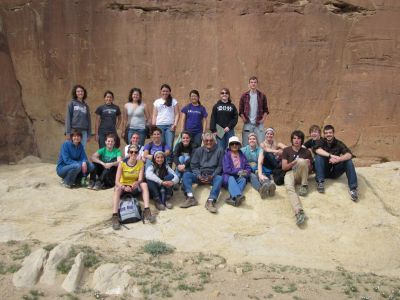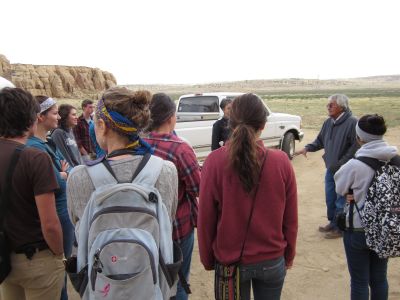We arrived at the Hopi Mission School in Kykotsmovi around 4 p.m. on Saturday, May 4th. After getting some dinner at the Hopi Cultural Center, we had an orientation to the religious identity of Hopi from Eric and Jane Polingyouma. Our daily schedule for our time here usually included a lecture in the morning, helping out at the Mission school from 10 a.m. to 1 p.m. and another lecture in the afternoon, followed by dinner and group reflection time.
Our lectures and field trips consisted of:
- Participating in mass and a feast day of a Navajo Catholic church, St. Joseph’s
- Hearing about Eric Polingyouma’s research of Hopi ancestral migrations
- Touring Dawa Park, a site with many Hopi and other native petroglyphs
- Visiting Old Oraibi, the oldest continuously inhabited village in North America, the Old Walpi pueblo, and the Hopi Heritage Museum
- Conversations with Danny Hononie, a tribal administrator, Nita Chimerica, a Hopi Christian, and Robert, a Hopi medicine man
- Introduction to the Hopi Cultural Preservation Office by Stewart Koyiyumptewa
The only way to see Dawa Park’s petroglyphs is in person since any kind of documentation is prohibited. Eric Polingyouma gave his interpretations of some of the symbols along the side of the mesa. He talked about finding symbols similar to these along the trail of Hopi migration from the Guatemala region. The next day, we went to the village of Old Walpi. Our tour guide at Walpi told us about the trails still used today to get up and down the mesas. She told us about how they make bread in their ovens outside the house. We got the opportunity to walk around a Hopi village where there were six kivas and were soon going to be used for the social and religious dances this weekend.
On Wednesday, May 8, we went to the Hopi Cultural Preservation Office where Stewart Koyiyumptewa talked to us about Hopi history and the process of outsiders doing research on Hopi culture. He also asked one of his colleagues to expand on the work the office is doing through the Native American Grave Protection and Repatriation Act (NAGPRA) legislation.
This week has provided many different perspectives on the role of religion, culture, and spirituality in Hopi daily life. We are grateful to all the people who have helped us understand the Hopi better.
For more information on our work at the Hopi Mission School, please see our next blog.
